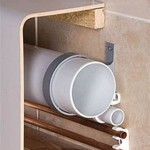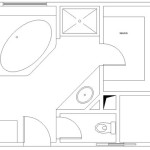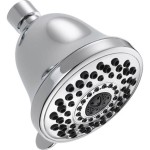Trough Bathroom Sink Vanity
The trough bathroom sink vanity has emerged as a stylish and functional fixture in modern bathroom design. Characterized by its elongated basin and open, exposed plumbing, the trough sink offers a unique aesthetic and practical benefits for various bathroom sizes and styles. This article explores the key features, advantages, and considerations associated with incorporating a trough bathroom sink vanity into a bathroom renovation or new construction project.
Material Selection and Durability
Trough sinks are manufactured from a variety of materials, each offering distinct aesthetic qualities and durability characteristics. Popular options include porcelain, ceramic, concrete, stainless steel, and natural stone like marble or granite. Porcelain and ceramic are cost-effective and readily available, providing a classic, clean look. Concrete and natural stone offer a more high-end, bespoke feel, while stainless steel is prized for its modern, industrial aesthetic. The choice of material will significantly influence the sink's longevity and maintenance requirements.
Concrete and natural stone sinks are generally more susceptible to staining and scratching and require regular sealing to maintain their appearance. Porcelain and ceramic are relatively low-maintenance and resistant to staining. Stainless steel is highly durable and hygienic but can be prone to water spots and fingerprints. Understanding the characteristics of each material is crucial for selecting a trough sink that aligns with the overall design vision and desired maintenance level.
Size and Configuration Options
One of the primary advantages of trough sinks is their adaptability to various bathroom sizes and layouts. They are available in a wide range of lengths, from compact models suitable for smaller powder rooms to expansive options ideal for spacious master bathrooms. The length selected should be proportionate to the available counter space and the number of users the sink is intended to accommodate.
Beyond length, trough sinks also offer flexibility in configuration. Some models feature a single, continuous basin, while others are divided into multiple compartments, creating designated washing areas for multiple users. Wall-mounted, pedestal, and console-style installations are all possible, allowing for customization based on the desired aesthetic and bathroom layout. Careful consideration of the sink's dimensions and configuration ensures optimal functionality and visual harmony within the bathroom space.
Faucet Compatibility and Placement
The choice and placement of faucets are integral to the functionality and aesthetic of a trough sink. Wall-mounted faucets are a popular choice, offering a clean, uncluttered look and maximizing counter space. Deck-mounted faucets, installed directly on the countertop or the sink's rim, are another viable option. When selecting deck-mounted faucets, it is crucial to ensure compatibility with the sink's design and the desired water flow.
The number and placement of faucets should also be considered based on the sink's size and the number of users. A single faucet may suffice for a smaller sink, while larger sinks or those intended for multiple users may benefit from two or more faucets. Careful planning of faucet placement ensures optimal water distribution and prevents splashing or overcrowding. Additionally, the faucet style should complement the overall design aesthetic of the bathroom.
Plumbing Considerations and Installation
Installing a trough sink vanity often requires specific plumbing considerations. Depending on the chosen configuration and faucet placement, adjustments to existing plumbing lines may be necessary. Wall-mounted faucets, for instance, necessitate plumbing connections within the wall cavity. Consulting with a qualified plumber during the planning phase is crucial to ensure proper installation and avoid potential complications.
Proper drainage is another essential factor. Trough sinks typically utilize a linear drain, running the length of the basin. This drain must be properly sloped to facilitate efficient water flow and prevent pooling. The drain's size and capacity should also be appropriate for the sink's volume and the anticipated water usage. Addressing these plumbing considerations upfront ensures the sink's optimal performance and longevity.
Maintenance and Cleaning
Maintaining the cleanliness and appearance of a trough sink requires regular cleaning practices. The specific cleaning methods and products will vary depending on the sink's material. Generally, mild soap and water are sufficient for daily cleaning. Abrasive cleaners and harsh chemicals should be avoided, as they can damage the sink's surface. Regularly wiping down the sink after each use can help prevent water spots and mineral buildup.
For sinks made of porous materials like concrete or natural stone, periodic sealing is recommended to prevent staining and protect the surface. Stainless steel sinks may require specialized cleaning products to remove water spots and fingerprints. Understanding the specific maintenance requirements for the chosen material ensures the sink's long-term beauty and functionality.

36 Rectangular Copper Trough Bathroom Sink In Aged

Scarabeo 5133 By Nameek S Teorema 2 Rectangular White Ceramic Trough Drop In Sink Thebath

Acf Ans39 By Nameek S New Space Double Bathroom Vanity Wall Mounted Wide 47 Thebath

Blue Sink Vanity With White Trough Transitional Bathroom

5 Reasons A Trough Sink May Be Right For Your Bathroom Native Trails

Free On 48 Concrete Farmhouse Trough Bathroom Sink Cement Rectangular Gray Vessel Homary Design Remodel

Hand Hammered Copper Trough Bathroom Vanity Sink In Shiny

Alfi Brand 48 In Rectangular Trough Vessel Sink Basin Concrete Abco48tr The Home Depot

Alfi Brand 36 In Trough Vessel Sink Basin White Ab36tr The Home Depot

Native Trails Nsl3619 Trough Bathroom Sink Qualitybath Com
Related Posts







